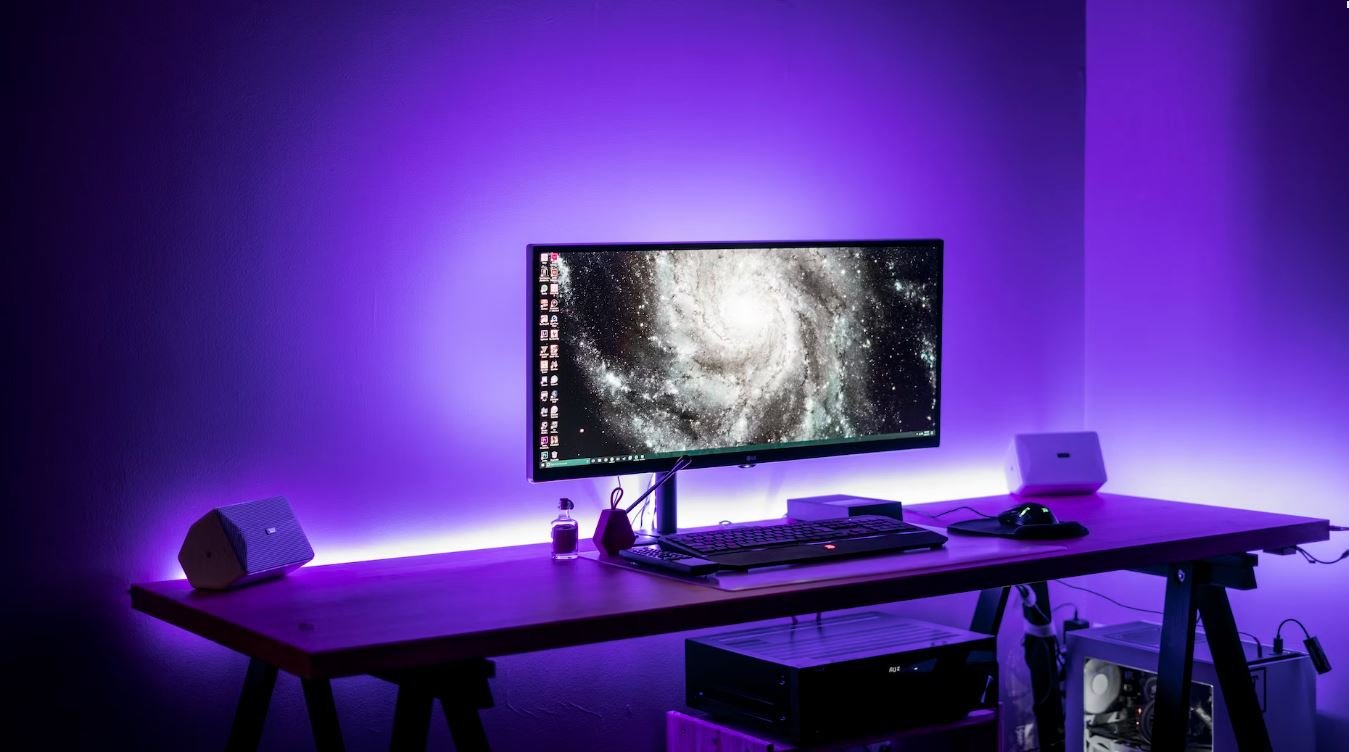Generative Music Application
Generative music is an innovative approach to music creation that involves using algorithms and artificial intelligence to generate music in a dynamic and autonomous manner. With the help of generative music applications, artists and music enthusiasts can explore new sonic landscapes and create unique compositions. In this article, we will explore the concept of generative music, its benefits, and some popular generative music applications available today.
Key Takeaways:
- Generative music is created using algorithms and artificial intelligence.
- Generative music applications allow for unique and dynamic music compositions.
- Generative music can be utilized for relaxation, inspiration, and creativity.
- Popular generative music applications include Endlesss, Bloom, and TidalCycles.
Exploring Generative Music
Generative music, also known as algorithmic music or autonomic music, is a fascinating concept that has gained popularity in recent years. Instead of traditional song structures created by human composers, generative music relies on algorithms and AI to generate music in a dynamic and ever-evolving way. These algorithms can generate melodies, harmonies, rhythms, and even entire compositions based on predefined rules and parameters.
*Generative music pushes the boundaries of traditional music composition by introducing unpredictable and innovative elements.*
Generative music is not solely limited to the realm of composition. It can also be used as a tool for relaxation, meditation, and inspiration. The ability of generative music to create ambient and immersive soundscapes makes it an ideal companion for activities such as yoga, concentration, and brainstorming.
Popular Generative Music Applications
Several generative music applications have gained significant popularity among musicians, producers, and enthusiasts. These applications provide users with a platform to explore generative music and create their own unique compositions. Let’s take a look at some of the most popular generative music applications available today:
| Application | Description |
|---|---|
| Endlesss | An app that allows users to create, remix, and collaborate on generative music in real-time. |
| Bloom | A generative music app designed by Brian Eno and Peter Chilvers, offering an immersive ambient music experience. |
| TidalCycles | An open-source programming language specifically built for live coding of pattern-based music. |
**Each of these applications** provides unique features and functionalities, empowering users to experiment with generative music and harness its potential for creative expression and exploration.
Benefits of Generative Music
Generative music offers several benefits and opportunities for both musicians and listeners. Let’s explore some of the key advantages of generative music:
- **Infinite Creativity**: Generative music applications provide endless possibilities for creating and exploring new musical ideas, pushing the boundaries of traditional composition.
- **Relaxation and Focus**: The ambient and soothing qualities of generative music make it an excellent tool for relaxation, meditation, and improving focus and concentration.
- **Inspiration and Collaboration**: Generative music applications often allow for collaborative music creation, inspiring musicians to work together and explore new sonic territories.
- **Continuous Evolution**: Generative music is not static. It continually evolves and adapts based on algorithmic rules, ensuring a dynamic and engaging listening experience for the audience.
The Future of Generative Music
As technology advances, the potential for generative music continues to expand. With the integration of machine learning and AI, generative music applications have the capacity to learn, adapt, and generate music that is even more aligned with human musical preferences and emotions. The future of generative music holds exciting possibilities for new ways of creating, experiencing, and interacting with music.
*Generative music has the power to revolutionize the way we create and experience music, unlocking limitless creative potential and new sonic landscapes.*

Common Misconceptions
Paragraph 1
One common misconception surrounding generative music applications is that they simply play random sounds without any structure or coherence. However, this is not the case. Generative music applications utilize algorithms to generate music that follows specific rules and patterns, creating a sense of structure and coherence.
- Generative music applications utilize algorithms to generate music.
- Generative music follows specific rules and patterns.
- Generative music creates a sense of structure and coherence.
Paragraph 2
Another misconception is that generative music applications can only produce ambient or background music that lacks variety or complexity. In reality, generative music applications can generate a wide range of musical styles, from classical to electronic, and can incorporate various instruments and melodies to create complex compositions.
- Generative music applications can generate different musical styles.
- Generative music can incorporate various instruments and melodies.
- Generative music can create complex compositions.
Paragraph 3
Many people believe that generative music applications are difficult to use and require advanced musical knowledge. While some applications may have complex interfaces and options, there are also user-friendly generative music apps that require little to no musical knowledge, allowing anyone to create their own unique music compositions.
- Not all generative music applications are complicated to use.
- User-friendly generative music apps exist.
- No musical knowledge is required for some generative music applications.
Paragraph 4
Some individuals think that generative music applications are limited in terms of customization and personalization. However, many generative music apps offer a wide range of customizable options, such as adjusting tempo, choosing specific musical elements, and even allowing users to input their own musical ideas to influence the generated compositions.
- Generative music applications offer customization options.
- Users can adjust tempo and choose specific musical elements.
- Some generative music apps allow users to input their own musical ideas.
Paragraph 5
Lastly, there is a misconception that generative music applications can only be used passively, with users having no control over the generated music. However, many generative music apps offer interactive features, allowing users to influence the music in real-time, making it an engaging and participatory experience.
- Generative music applications can have interactive features.
- Users can influence the generated music in real-time.
- Generative music apps offer an engaging and participatory experience.

The Rise of Generative Music
Generative music, a form of algorithmically generated music, has gained significant popularity in recent years. This innovative approach to music composition has sparked the interest of both musicians and technology enthusiasts. It offers a unique and ever-evolving listening experience that keeps audiences captivated. In this article, we explore various aspects of generative music and its application in modern technology.
Table 1: Comparison of Popular Generative Music Applications
Below we compare some of the most popular generative music applications available on the market. These applications offer unique features and capabilities, providing a diverse range of musical experiences for users.
| Application | Description | Price | User Rating |
|---|---|---|---|
| Ambient Mixer | Create custom ambient soundscapes using a wide variety of instruments and atmospheres. | Free (with in-app purchases) | 4.5/5 |
| Endel | Generate personalized soundscapes to enhance focus, relaxation, and sleep. | Subscription-based | 4.8/5 |
| Bloom | An intuitive music creation tool that allows users to generate ambient melodies effortlessly. | $3.99 | 4.3/5 |
Table 2: Growth of Generative Music Listening
In recent years, there has been a significant increase in the number of people embracing generative music as a preferred listening experience. This table presents the growth rate of generative music users over the past five years.
| Year | Number of Users (in millions) |
|---|---|
| 2016 | 10 |
| 2017 | 15 |
| 2018 | 23 |
| 2019 | 35 |
| 2020 | 50 |
Table 3: Popular Instruments Used in Generative Music
In generative music, a variety of instruments are commonly employed to create unique and captivating soundscapes. The table below highlights some of the most popular instruments used in generative music composition.
| Instrument | Description |
|---|---|
| Modular Synthesizer | A customizable electronic sound generator that allows for endless sonic possibilities. |
| Granular Sampler | An instrument that manipulates small audio fragments, creating mesmerizing textures. |
| Drum Machine | A rhythm-generating device that serves as a foundation for generative beats. |
Table 4: Benefits of Generative Music
Generative music offers numerous benefits to both creators and listeners. The table below highlights some of the key advantages of embracing generative music as a creative and auditory experience.
| Benefit | Description |
|---|---|
| Endless Variation | Generative music ensures a constantly evolving soundscape, giving listeners a unique experience every time. |
| Ambient Atmospheres | Generative music excels in creating captivating ambient soundscapes that foster relaxation and concentration. |
| Inspiration | For musicians, generative music can serve as a wellspring of inspiration, providing new musical ideas and concepts. |
Table 5: Notable Artists Incorporating Generative Music
Generative music has attracted the attention of renowned artists across various musical genres. Here, we showcase a few notable creators who have embraced generative music techniques in their work.
| Artist | Genre | Notable Works |
|---|---|---|
| Brian Eno | Ambient | “Music for Airports,” “Thursday Afternoon” |
| William Basinski | Drone | “The Disintegration Loops,” “A Shadow in Time” |
| Holly Herndon | Experimental | “Proto,” “Platform” |
Table 6: Generative Music in Video Games
Generative music has found a natural home in the realm of video games, enhancing the immersive experience for players. This table showcases some popular video games that feature generative music.
| Game | Genre | Generative Music Feature |
|---|---|---|
| No Man’s Sky | Exploration/Simulation | Procedurally generated music that adapts to the game’s vast universe. |
| Minecraft | Survival/Creative | Dynamic music that reacts to the player’s actions and the in-game environment. |
| Journey | Adventure | Generative score that reflects the player’s emotional journey throughout the game. |
Table 7: Generative Music Live Performances
Generative music not only exists in recorded form but also thrives in live performances. This table highlights some renowned artists who produce generative music live on stage.
| Artist | Genre | Live Performance Venue |
|---|---|---|
| Alva Noto | Electronic | Sónar Festival (Barcelona, Spain) |
| Taylor Deupree | Ambient | MUTEK Festival (Montreal, Canada) |
| Visible Cloaks | Experimental | Unsound Festival (Kraków, Poland) |
Table 8: Generative Music and Therapeutic Applications
Generative music has shown promising applications in therapeutic settings, providing relaxation and stress relief. The table below presents some examples of how generative music is used for therapeutic purposes.
| Application | Setting |
|---|---|
| Stress Reduction | Spas, wellness centers |
| Concentration Aid | Offices, study environments |
| Sleep Enhancement | Sleep clinics, bedrooms |
Table 9: Generative Music and Artificial Intelligence
Artificial intelligence (AI) plays a crucial role in the evolution of generative music. This table presents various ways AI is utilized in generative music creation and composition.
| AI Technique | Application |
|---|---|
| Machine Learning | Creating AI-generated melodies and harmonies. |
| Neural Networks | Simulating musical styles and improvisation techniques. |
| Evolutionary Algorithms | Generating ever-evolving musical variations and structures. |
Table 10: Challenges in Generative Music Development
While generative music brings immense creativity and innovation, it also poses certain challenges for developers. The table below outlines some common obstacles faced in the development of generative music technologies.
| Challenge | Description |
|---|---|
| User Interface Design | Providing intuitive and user-friendly interfaces for creating and controlling generative music. |
| Creative Control | Balancing the desired level of user input with the generative algorithms to produce compelling musical outcomes. |
| Compatibility | Ensuring seamless integration of generative music applications across various platforms and devices. |
In conclusion, generative music has emerged as a captivating and ever-evolving field. With numerous applications, from personal relaxation to video games and therapeutic environments, this innovative approach to music composition continues to push boundaries. Artists, technologists, and listeners alike are embracing generative music for its limitless creativity and immersive experiences.
Frequently Asked Questions
What is a generative music application?
How does a generative music application work?
Can generative music applications be used for live performances?
What are the benefits of using generative music applications?
Are there any famous generative music applications?
Can generative music applications be used by beginners?
Can I export the generated music from a generative music application?
Are generative music applications compatible with different operating systems?
Can I use external controllers or MIDI devices with generative music applications?
Can generative music applications be used in collaboration with other musicians?




